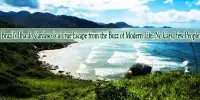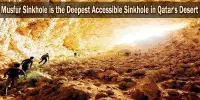Many architects would kill to have an empty canvas to design their ideal project on. Although there are just 15 overwater houses on the Kudadoo Maldives Private Island, which debuted in 2018, award-winning architect Yuji Yamazaki found himself considering how his structure could highlight the island rather than the other way around.
His strategy was to construct in a way that accentuated the island’s natural beauty while utilizing the least amount of natural resources.
“The real concept is, how we can showcase this existing beautiful nature, meaning pristine, white beach and crystal clear water,” Yamazaki explains. “Those are the elements that we wanted to preserve.”
First on the priority list: clean energy.
Yamazaki didn’t like how many hotels and resorts tried to conceal the panels behind buildings as if they were something embarrassing or unsightly, despite the fact that solar electricity is growing more widespread in the Maldives.
Instead, he and his team designed their own panels and included them in the overall aesthetic of the resort. Today, Kudadoo remains the only fully solar-powered private island in the country.
“We decided to just design one large public building with the solar power roof,” Yamazaki says. “In terms of calculation of the power, that was enough scale footage to cover or supply the electricity throughout the island.”
I think a lot of developers, architects, investors … are becoming more conscious of why people come here beyond the usual five star hotel accommodation. What are the best points? The water, the weather, the breeze, the view. I think those are the elements that are important. Instead of building the fun big swimming pool and the bar lounge, I think lot of investors are not only doing that but also, trying to allocate some of the profits to a local community to clean the environment.
Yuji Yamazaki
Yamazaki’s schooling in solar panels was aimed at more than just producing something lovely and helpful.
“When you go to Maldives, you typically arrive with sea plane or a boat, so the first impression of the resort is always a roof or building from far away,” he explains. “Instead of hiding it, we showed that we made it a main character of the island so that people (see it when they) arrive.”
That juxtaposition is exactly what Yamazaki wanted to achieve. Although visitors may come to the Maldives for the luxury and stunning scenery, the architect believes they will also depart with a sense of obligation to take care of the islands.
According to him, sustainability isn’t something you add on and tuck away behind a building. Instead, it’s a gorgeous design feature positioned as prominently as possible.
A sinking nation
The low-lying islands of the Maldives are at serious risk from climate change.
According to forecasts from NASA in coordination with the United States Geographical Survey, the entire country could be fully underwater by the year 2050.
Maldivian President Ibrahim Mohamed Solih addressed these issues in a speech at the 2021 United Nations Climate Change Conference (COP26) in Glasgow last year.
He said: “Our islands are slowly being inundated by the sea, one by one. If we do not reverse this trend, the Maldives will cease to exist by the end of this century.”
Yamazaki also sounds the alarm.
“The concern is really becoming more visible and loud. Sea is rising much faster than scientists predicted. The people in Maldives are very concerned. We’ve been walking on the new resorts and make sure there’s a lot of study done on erosion and shoreline protection.”
But the architect is trying to be even more proactive in his approach.
“As an architect, we are there to build a new environment,” he says. “We make sure that we showcase what’s going on under the water, not only sea level rising, but what’s happening on the sea temperature, why the coral is dying or why the fish migration is different this year…we also like to bring people’s attention to that as well.”
As more and more travelers learn about sustainability and specifically seek out properties that are reliant on natural fuels and power sources, the architect believes brands and destinations will follow.
“I think a lot of developers, architects, investors … are becoming more conscious of why people come here beyond the usual five star hotel accommodation. What are the best points? The water, the weather, the breeze, the view. I think those are the elements that are important. Instead of building the fun big swimming pool and the bar lounge, I think lot of investors are not only doing that but also, trying to allocate some of the profits to a local community to clean the environment.”
Private plunge pools, world-class wine lists and doing something good for the environment at the same time? Now that sounds like luxury.
















